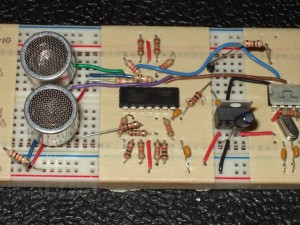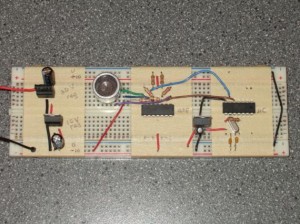The range on the infrared channel, which I discussed in the last entry, is probably enough; but I’d like to increase it a bit. With more range I can space modules farther apart if needed, and hopefully be able to have a wider angle between the transmitter and receiver.
Fortunately the signal output by the Darlington transistor pair on the receiver is a pretty clean digital signal. At full power it ranges from (a little above) 0 V to (a little below) 3.3 V. As the transmitter gets farther away the digital signal remains but the low voltage increases beyond the UART receiver’s ability to read a 0. For example, at a large distance the UART signal might range from 2.5 V (logical 0) to 3.3 V (logical 1).
There are several options I’ve considered:

